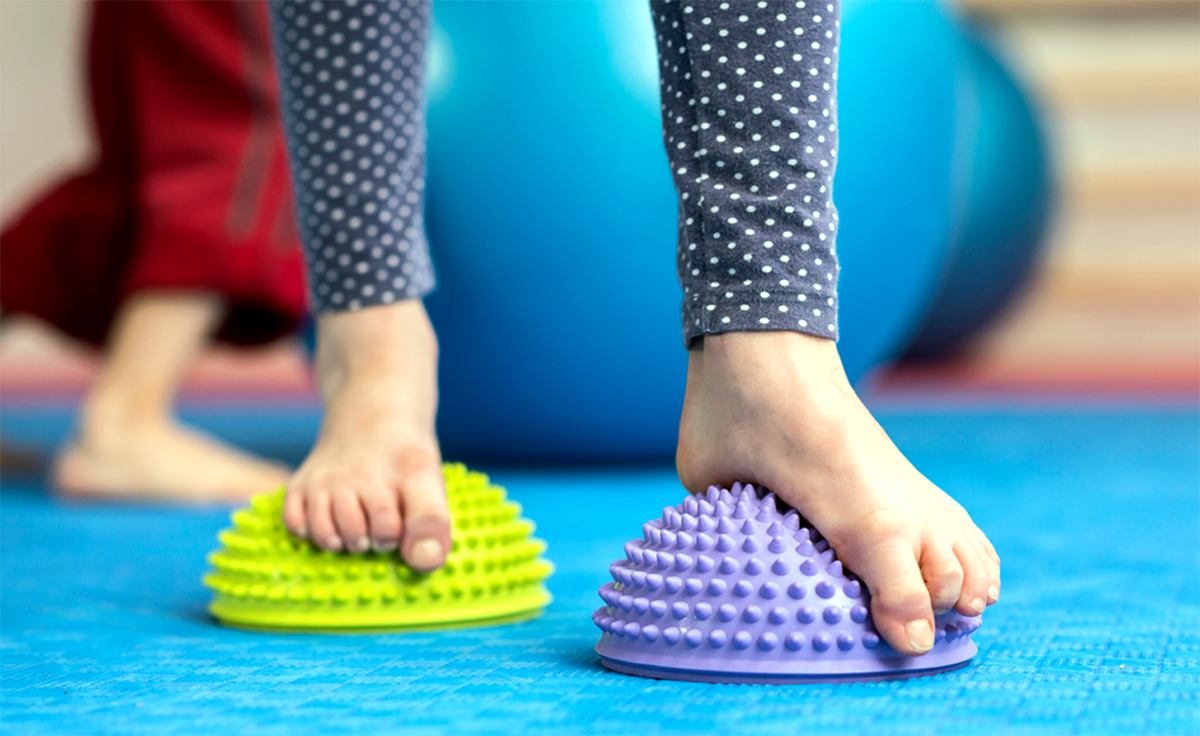DR M K Mam
When we look at a foot , we find that inner border is raised and it does not touch the ground on weight bearing. That is the longitudinal arch of the foot which can be very well seen on the inner side of foot.
In addition we have a transverse arch that is less defined and is located behind metatarsal heads. The arches of foot are formed by interlocking of the bones and the ligaments of foot and leg muscles especially posterior tibial muscles. When the longitudinal arch is less developed i.e. is flattened , we get a flat foot deformity wherein entire under surface of foot touches the ground.
Flat foot in a child may be flexible or rigid, and congenital i.e. since birth or acquired after birth.Flexible or mobile flat foot is the commonest type of flat foot. It is a normal foot shape that is present in most infants. It has been regarded as a physiological deviation rather than a disorder, it is a normal variant of foot shape. Child has flat feet when he stands on his feet and arch appears when the foot is off the ground. The reason behind this is that the foot and leg muscles of a child aren’t developed enough to support the arches when child first begins to stand. The arch develops and flatness disappears between 4 to 10 years of age as muscle tone and strength in foot and leg muscle develops. Parents of the child with the flat foot are concerned and often worry that the deformity in future may lead to a permanent deformity or disability. However, most of such children eventually develop arches without having any problems in adulthood. Most of these patients are asymptomatic .Flatfoot usually decreases with age, however occasionally, it may persist into adult life as foot arches might not develop. There are some reports that it is associated with overweight and with a bigger size of the foot, however there are also studies that refute this association.
Some studies also report that use of footwear at an early age- infancy increases the prevalence of flat foot. Many of these children have ligamentous laxity, joint hypermobility and a family history of flat feet. The most important thing is to differentiate a child with flexible flatfoot from one with a rigid deformity. A detailed history, thorough clinical examination of the foot, entire lower limb and the body, and radiographs help us in identifying a rigid flat foot that may have underlying pathology. We need to assess the child for any joint hypermobility or any neuromuscular disorder.We also need to assess foot for any associated contracture of heel cord i.e. Achilles tendon .
Flexible flatfoot with a short Achilles tendon is usually associated with pain. Rigid or stiff flat foot is the one where the flatness of foot cannot be corrected passively. The deformity of the foot does not disappear even when the foot is off the ground. It can be congenital in origin i.e. since birth and can be due to abnormality in bones of foot. Rigid flat foot in an infant can be due to congenital vertical talus. There is congenital abnormality of talus – the tarsal bone located between leg bone i.e. tibia and heel bone i.e. calcaneus lies in a vertical position. The foot is not only flat but the under surface is convex and it is the most prominent part of sole. The deformity is very rigid and usually needs surgery for correction. In older children a rigid flat foot can be due to bony abnormality like tarsal coalition, where there is a partial or a total union between adjacent tarsal bones and it also can be since birth.
Rigid flat foot can also be acquired in origin and is usually seen in older child. It can be due to an inflammatory problems of the joints of the foot-arthritis, a neurological problem , injury to foot or muscle spasm- peroneal spastic flat foot.
Secondary flat foot is the one when flat foot develops secondary to a deformity somewhere else in the leg like knock knee- genu valgus deformity of knees.
Treatment: Most children with flexible flatfeet are asymptomatic and do not require treatment. It is the parents who as usual are very much worried and ask lot many questions. It is essential to reassure and educate them that it is something normal and usually corrects between the age of 4 and 10 years. If by then it does not correct , function is less likely to be affected even though the foot is flat. As such, it is appropriatethat wesimply observe the child with a asymptomatic flat foot. It has been reported that flexible flat foot is often unnecessarily treated. Arch support inside the shoe on inner side, some modification in the sole of the foot with a slight raise on inner are usually prescribed. However, there is very little evidence that these devices influence the shape of the foot and create a longitudinal arch.Child’s foot development will be the same whether arch supports are worn or not.Rather, there is some evidence that shoes may inhibit natural development of the arch of the foot. Foot exercises that strengthen the muscles of the foot and leg are taught to child. A flatfoot with a contracture of the Achilles tendon may be painful and in these children physical therapy-stretching program, bracing etc. are useful.Treatment in a rigid flat foot depends upon the underlying cause. Initial treatment in all rigid flat foot always has to be non-operative like physical therapy, bracing- orthotics etc. and it helps in many cases. When nonoperative treatment does not work ,surgical treatment depending upon the pathology has to be considered.
(The author is Formerly, Vice Principal, Prof.& Head of Orthpaedics, CMC , Ludhiana)
Trending Now
E-Paper


